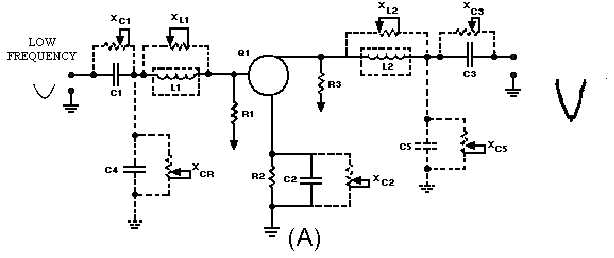2-9
FACTORS AFFECTING FREQUENCY RESPONSE OF AN AMPLIFIER
In chapter 1 of this module, the fact was mentioned that an audio amplifier is limited in its frequency
response. Now you will see why this is true.
You should recall that the frequency response of an a.c. circuit is limited by the reactive elements
(capacitance and inductance) in the circuit. As you know, this is caused by the fact that the capacitive and
inductive reactances vary with the frequency. In other words, the value of the reactance is determined, in
part, by frequency. Remember the formulas:
If you ignore the amplifying device (transistor, electron tube, etc.), and if the amplifier circuit is
made up of resistors only, there should be no limits to the frequency response. In other words, a totally
resistive circuit would have no frequency limits. However, there is no such thing as a totally resistive
circuit because circuit components almost always have some reactance. In addition to the reactance of
other components in the circuit, most amplifiers use RC coupling. This means that a capacitor is used to
couple the signal in to and out of the circuit. There is also a certain amount of capacitance and inductance
in the wiring of the circuit. The end result is that all circuits are reactive. To illustrate this point, figure 2-4
shows amplifier circuits with the capacitance and inductance of the wiring represented as "phantom"
capacitors and inductors. The reactances of the capacitors (XC) and the inductors (XL) are shown as
"phantom" variable resistors. View (A) shows the circuit with a low-frequency input signal, and view (B)
shows the circuit with a high-frequency input signal.
Figure 2-4A.—Amplifiers showing reactive elements and reactance.



